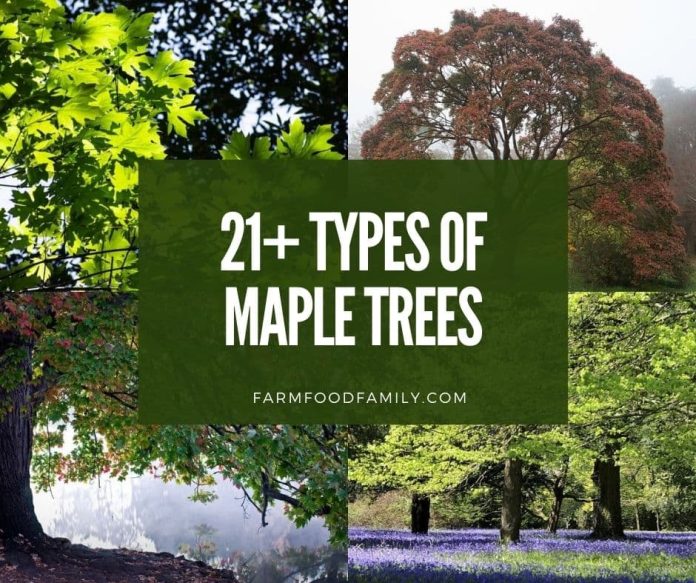21+ Different Types Of Maple Trees With Pictures
Maple trees are sought after specimen trees for many viable reasons. In terms of growth, maintenance, and upkeep, they are drought tolerant and can grow well in full sun and in shade. On the aesthetic side, we all love the fall colors of maple trees. Some species would even sport various autumn colors at once.
We all know the signature look of the maple tree leaf but there is more to this tree than just its foliage. There are different types of maple trees and this post features some of the best maple trees that you can easily incorporate in your landscape.
Related: Types of Trees | Types of Oak Trees | Types of Hickory Trees | Types of Elm Trees | Types of birch trees | Types Of Willow Trees | Types Of Walnut Trees
In this article:

What does a maple tree look like?
Maple trees belong to the Acer genus. The majority of known maple species are considered deciduous which can grow into full-blown trees with massive trunks or as multi-stemmed shrubs. Of course, one could easily recognize a maple tree by its lobed, five-point leaves. Its foliage is green most of the year, but it turns into different colors come fall.
Furthermore, they sport a dark bark, reddish-brown twigs, and sometimes produce winged fruits. A maple tree’s roots are invasive so if the first qualifications fit plus they have extending roots, down the concrete, and more, that is a maple tree.
How many types of maple trees are there?
As of writing, there are at least 130 species of maple trees distributed mainly in Europe, Asia, North America, and Northern Africa. 13 of the most common species of maple trees are native to Canada and the rest of North American states.
Where do maple trees grow?
Maple trees grow well in zones 3-9. This means that it is mostly grown in cooler climates but at the same time can also withstand more temperate climates. When planted, just take note that it would thrive in full sun and partial shade. Some love more moisture as their natural habitat would be swamped but some do not tolerate a lot of moisture.
Maple tree facts
Before we get to the focus of this post which are the types of maple tree first through these fun facts about the tree.
- It is an uncommon fact, but maple trees have been around the earth for more than 100 million years. That means that they were already around at the time of the dinosaurs.
- The genus Acer is one of the plant genus containing the most variable species when it comes to height. Some grow at just 8ft while the others grow at more than 120ft.
- Maple trees should be 30-50 years old before they could produce syrups that are bottled for our consumption.
- They have a very long lifespan. The longest living maple tree is 300 years old.
- Maples are not just useful for their syrup. Their wood is specifically chopped and turned into coal. This coal is used in the distillation process of Tennessee whiskey.
- Maple wood is considered as a tone wood or basically a type of wood which carries sound waves. As such, maple tree wood is used in making musical instruments.
- Maple trees are instrumental in the tourism boom of specific US states and countries such as Canada and Japan, among others.
- Planting more maple trees is seen by wildlife conservation think tanks as one of the best solutions to increase the dwindling number of honeybees.
- Maple trees symbolize balance, magic, promise, and longevity because of their ability to withstand different care conditions, climates, and locations.
Maple tree identification
So, how do you visually identify a maple tree with its many types and cultivars? For this question, we turn to some major characteristics in terms of leaves, bark, maple tree height and its flowers.
Leaf
Maple tree leaves, as have been said, have a lobed shape and five pointed edges. Only the paperbark and box elder maple trees have compound leaves, meaning that they have more 2-3 leaflets per leaf stock. Most maple trees have a fuzzy leaf, but the silver maple has the softest coating on its leaf underside.
When broken, they would yield a bit of milky sap. But you would know that it is a sugar maple if it yields a lot of sap and it is a Norway maple if it does not have any sap at all. When it comes to serration, all have finely toothed edges, but the red maple has the most serrated one and it is kind of sharp.
Bark
The bark of maple trees is grayish brown at youth and turns into furrowed, dark brown bark at maturity. There are also prominent grooves in between plates. However, this is not true for all maple trees since some have more subtle grooves and fissures and some have smooth barks.
Height
Maple trees are considered as one of the most diverse genus when it comes to the height of its species. The smallest ornamental maple grows to just 8ft while some of the tallest species are at 120ft and above.
Flowers
It is an underrated fact, but maple trees do bear flowers. Most bloom yellow-green, yellow, or white flowers during spring, while some come late during summer. Some notable ones like the silver maple bloom in late winter.
Oak vs Maple tree
Being two very common specimen and shade trees in North America, it might be hard to distinguish these two if you do not know where to begin looking. They do not have many similar characteristics but their flashy foliage during fall might be the reason why they are mostly pitted together. Here are some of their considerable differences.
| Maple | Oak | |
| Taxonomy | Acer | Quercus |
| Use | Ornamental, hedge, and shade treeFor syrup production | Ornamental, shade, lumber |
| Size and height | 8-120+ ft. | 20-100+ft. |
| Bark | Smoother, with grooves and fissures but subtle | Rough, thick, and deep fissures and grooves |
| Roots | Shallow | Deep |
| Fruit | Samara | Acorn type with seeds |
| Leaves | Lobed, with 3 points and above, serrated or smooth | Spirally arranged, serrated or smooth, rounded |
| Climatic tolerance | Drought tolerant | Highly drought tolerant |
| Disease | More susceptible | More hardy compared to maple |
Both trees have been around for a million years and have been well archived to have been used in many woodworks and early industries in the world. Both are used as specimen trees so it is up to you to weigh the pros and cons of each tree when used for landscaping purposes.
Types of maple trees
As have been said, there are many types of maple trees. Some of them are more familiar than others but we just do not know the name. Some are rare but are remarkable specimen trees for any landscape or garden. To know more of them, here are some notable maple tree types that you should know of.
1. Amur Maple (Acer ginnala)
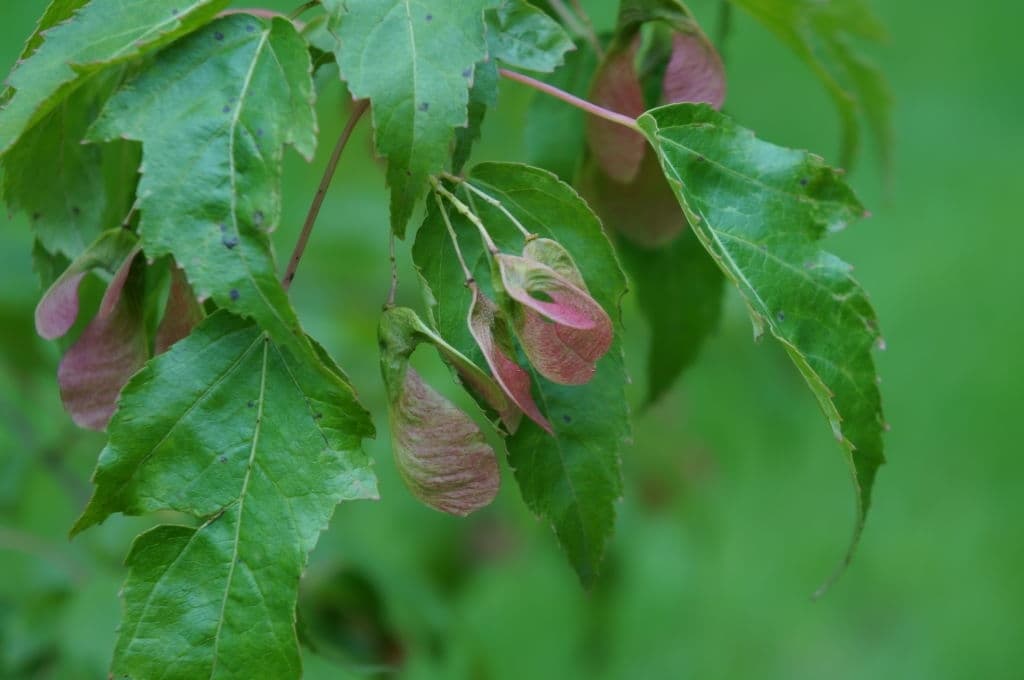
This one is one of the smallest maple trees available. When grown as a shrub, it follows a multi-stem growth but as a small tree, expect for it to have a rounded and dense crown. It also goes by the name of Siberian maple and is listed as a subspecies of Tatarian maple.
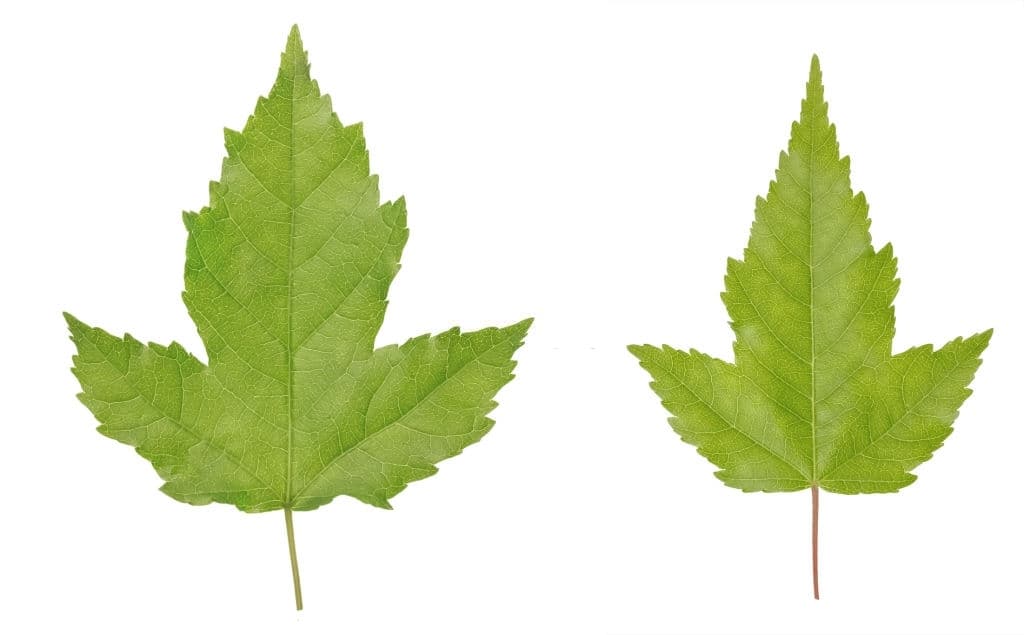
Its native areas would be Siberia, Japan, Korea, and Mongolia. It grows to just 30ft with red and yellow leaf colors during fall. Its most popular cultivars would be the ‘Flame’ and ‘Ember’. It develops drought tolerance once the roots are established.
2. Big Leaf Maple (Acer macrophyllum)
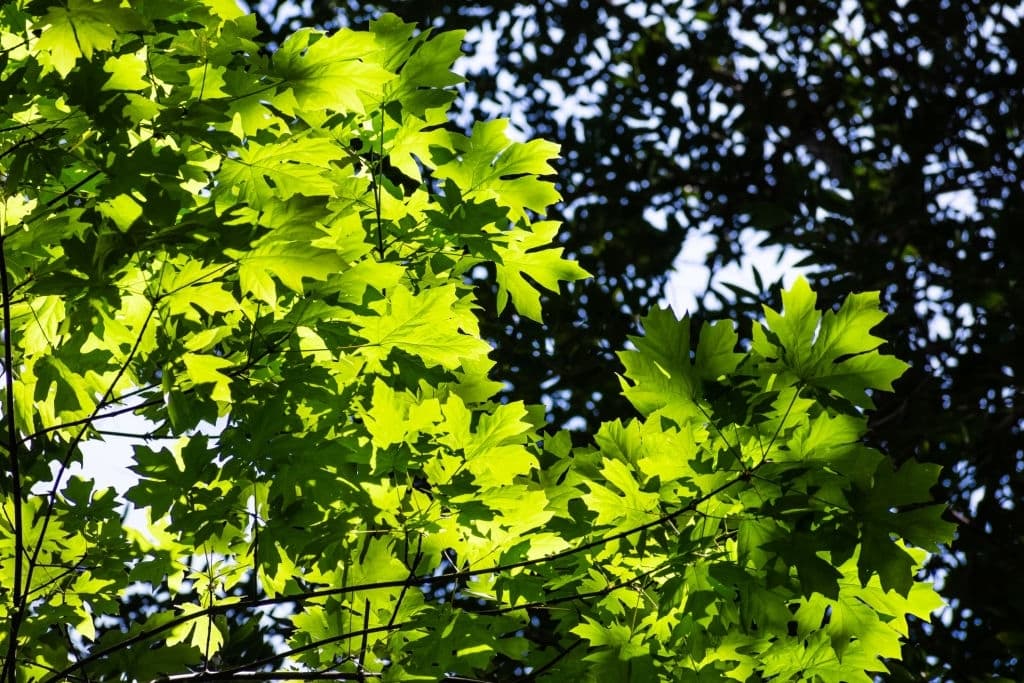
As its name implies, it sure has large showy leaves. As a matter of fact, it has the largest leaves of all maple trees as they extend to 12-inches wide and sometimes larger. It is also called the Oregon maple or the broadleaf maple. It is also identifiable for its large trunk and furrowed, reddish brown bark.
Because of its large shade cover, it is planted extensively in national parks and streets. It can grow to a maximum height of 100ft, loves full sun and can tolerate partial shade. It is hardy in zones 5-9 and is tolerant to drought.
3. Boxelder Maple (Acer Negundo)
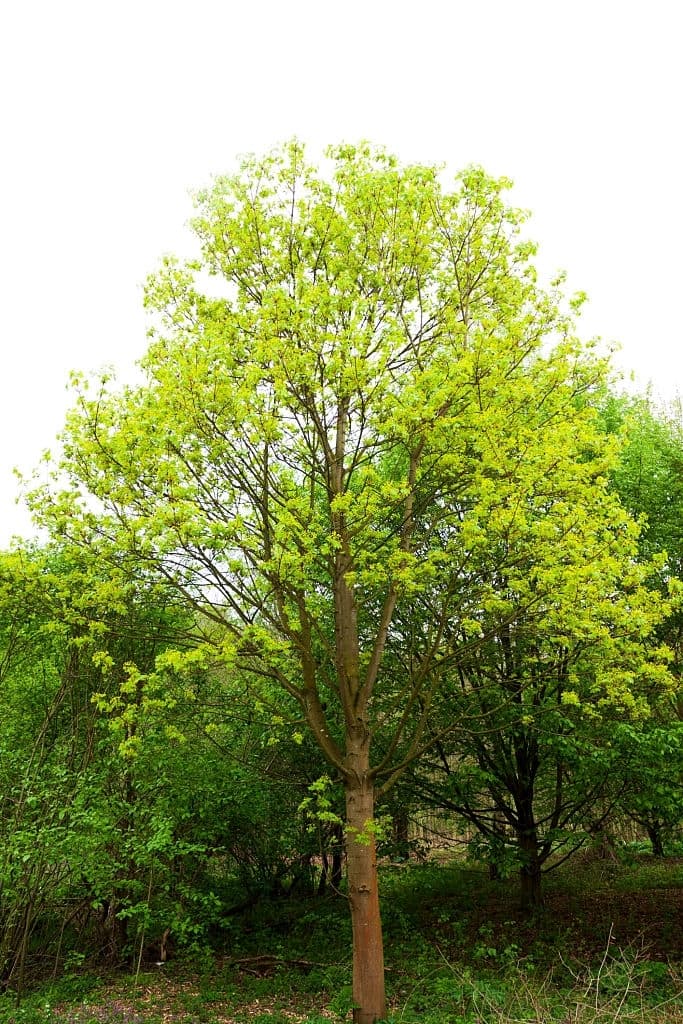
The boxelder maple also goes by other names including the Manitoba maple or the ash-leaved maple. It is a fast grower and sometimes becomes mature with multiple trunks. It can reach a height of 80ft, making it more of a shade tree than a specimen tree.
The leaves are more like ivy leaves than maple leaves. They have three lobes at youth and become lobeless at maturity. They are also serrated at the edges and turn yellow during fall.
4. Coral Bark maple (Acer palmatum ‘Sango-kaku’)
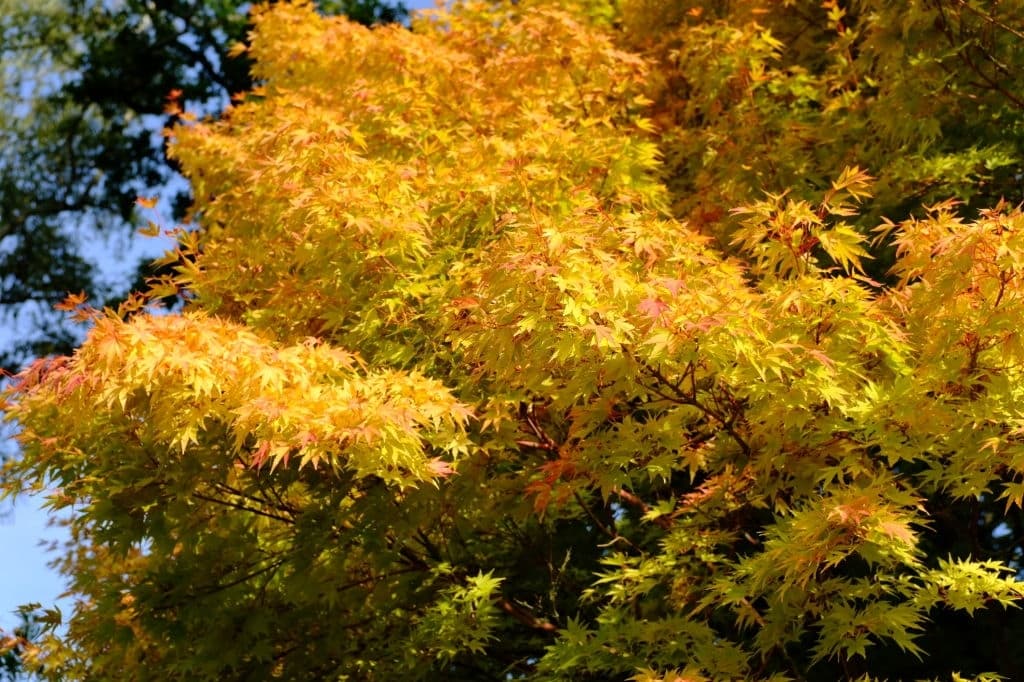
The Sango-kaku maple or coral bark maple is another ornamental cultivar of the Japanese maple. It is considered as a four-season landscape shrub because of its yellow green leaves during spring, deeper green at summer, orange and golden yellow at fall, and leafless, glowing reddish-brown stems during winter and becomes a deeper red hue as winter progresses.
They are great underlayer trees for landscapes as they grow at just 20-25ft especially in a contrast of evergreens. It loves well-draining soils and thrives in full sun to partial shade. It loves moisture and grows at a moderate rate.
5. ‘Crimson King’ Norway maple (Acer platanoides ‘Crimson King’)
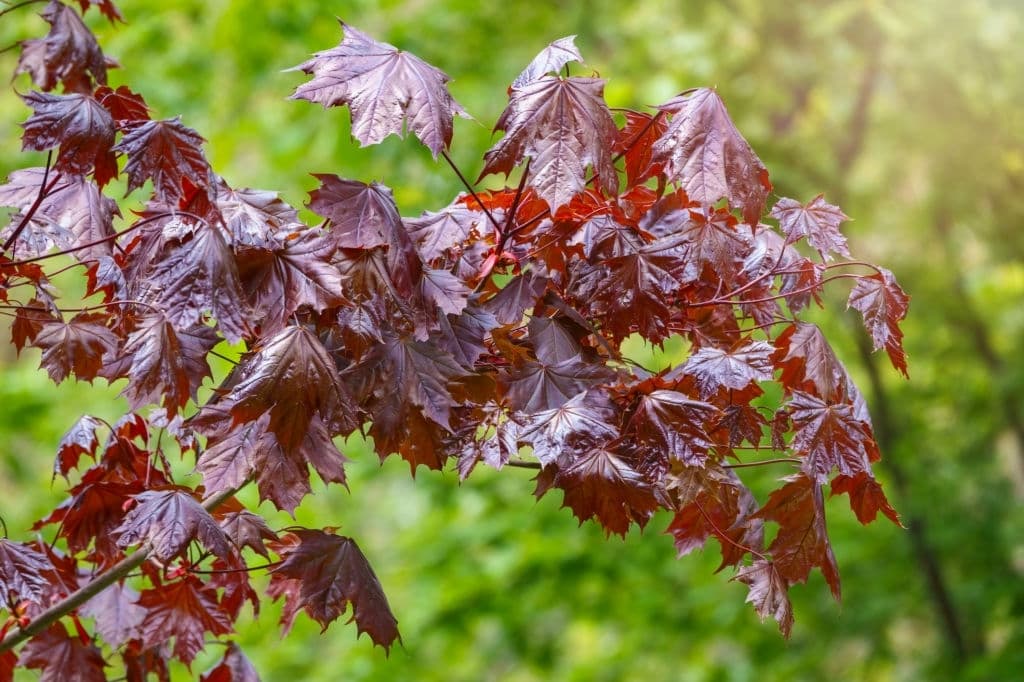
This ornamental maple is known for its flashy deep purple foliage all through summer which transforms into golden yellow during fall. It is a hardy ornamental as it is both drought and frost-tolerant. As such, it is commonly found in large estates, national parks, and urban landscapes.
Since it grows in between 25-40ft, it could also be planted as a shade tree. It has an upright growth habit, forming a dense, rounded crown. It grows in zones 3-7, thrives well in full to partial sun and can tolerate different soil and climatic conditions. It also has the ability to withstand long winters.
6. Freeman Maple (Acer freemanii)
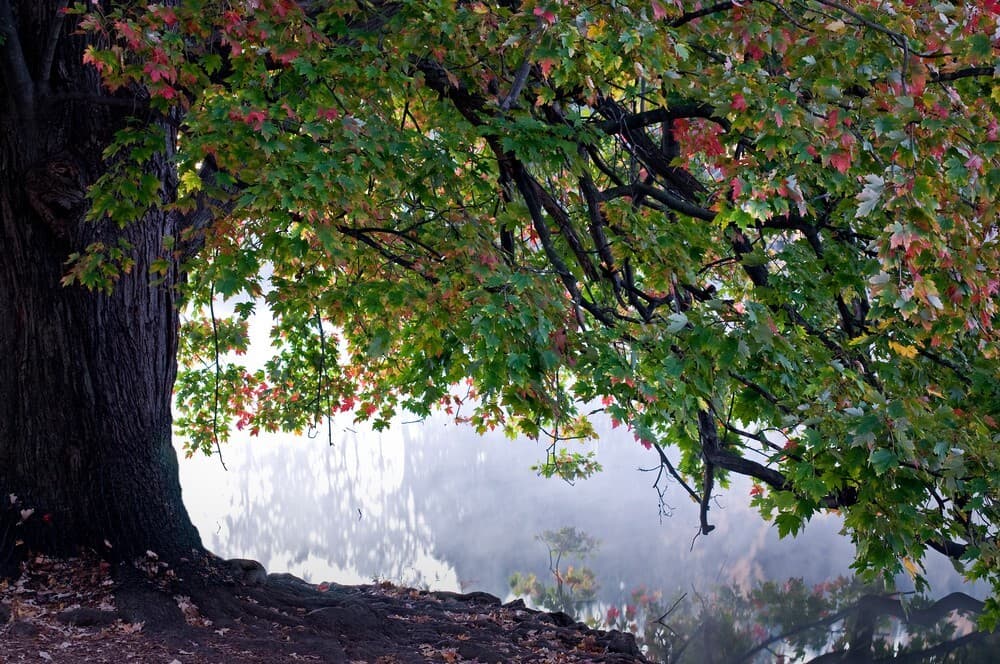
This one can be trained to grow like a shrub and be planted in urban landscapes due to its tolerance to different qualities of soil, temperature and air quality or can be grown as a large, deciduous tree with dense and rounded crown. It grows in between 30-60ft in zones 3-8.
Shrub or tree, it has a beautiful foliage display during fall. Its lobed leaves turn from yellow green to bright orange or crimson red in autumn. It is also one of those few maple trees with soft textured barks and subtle furrows.
7. Hedge Maple/Field Maple (Acer campestre)
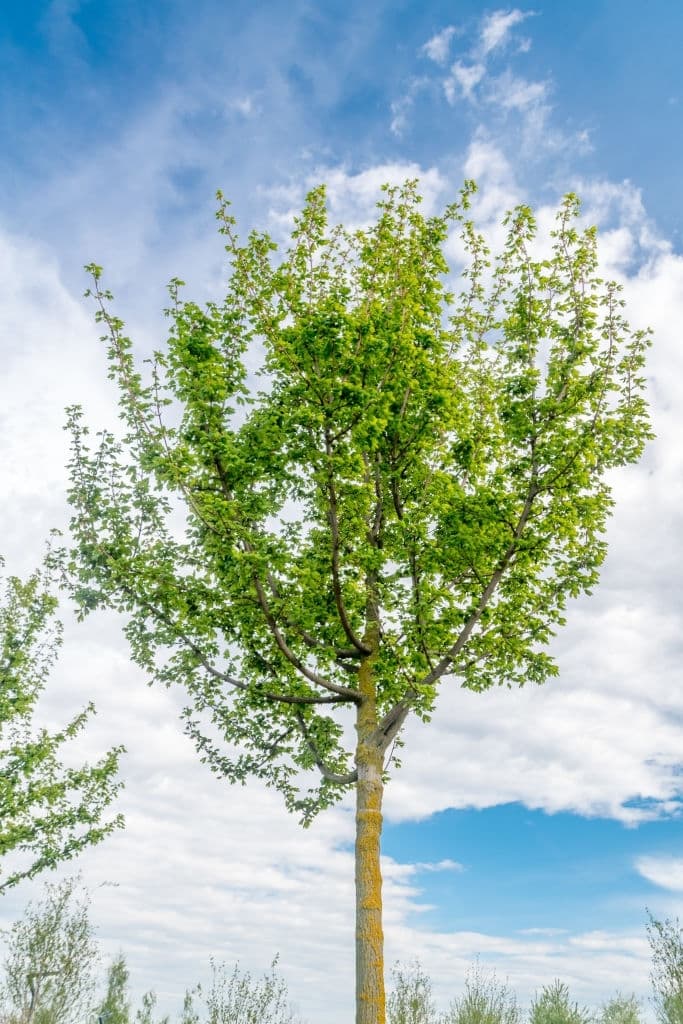
This is the least picky maple tree when it comes to care requirements, making it a fit specimen tree for urban landscapes.
It tolerates all types of soils, can thrive in sun and shade, grows in polluted locations and is drought tolerant. And of course, as the name implies, it is a small to medium-sized shrub that is often used as hedging.
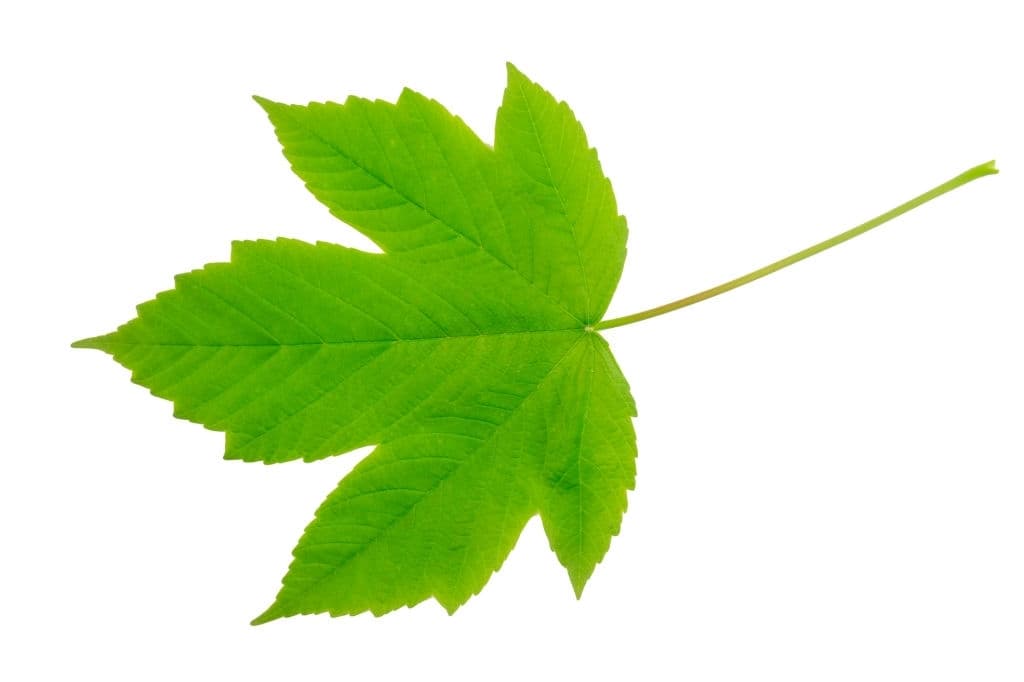
In the fall, the green leaves turn into fiery yellow. It grows in between 25-35ft and its native location would be across Europe and southwest Asia. It thrives in zones 5-8.
8. Hornbeam Maple (Acer carpinifolium)
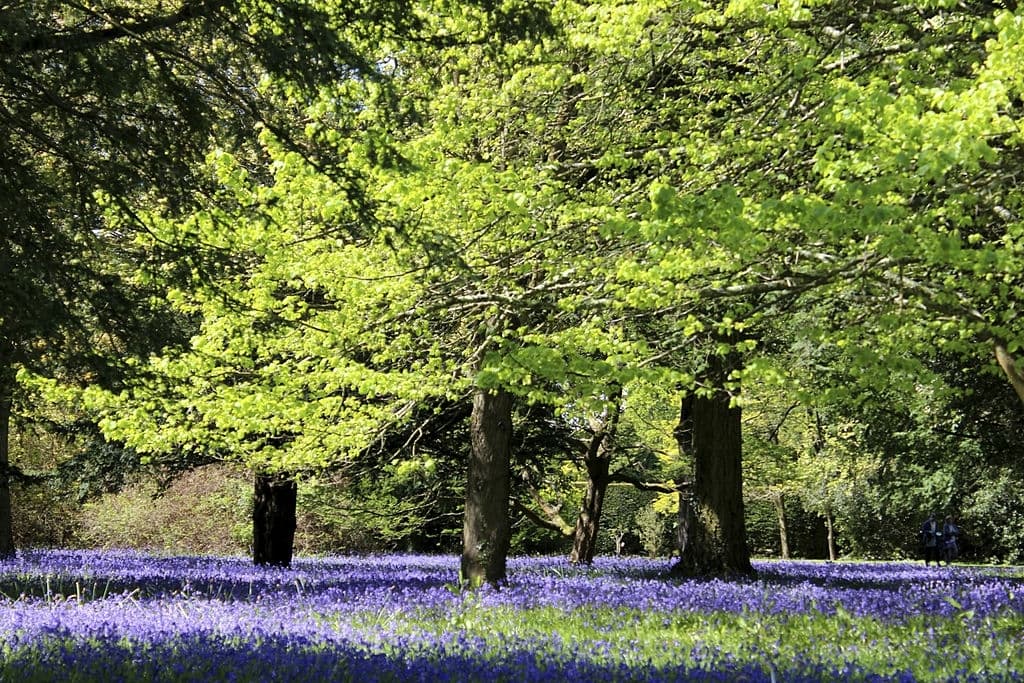
You would not believe that the hornbeam maple is a maple tree because it does not have the lobed, five-point leaf that the tree is known for. It has elongated leaves that are completely lobeless. Because the tree itself resembles the hornbeam tree, this maple was named as such.
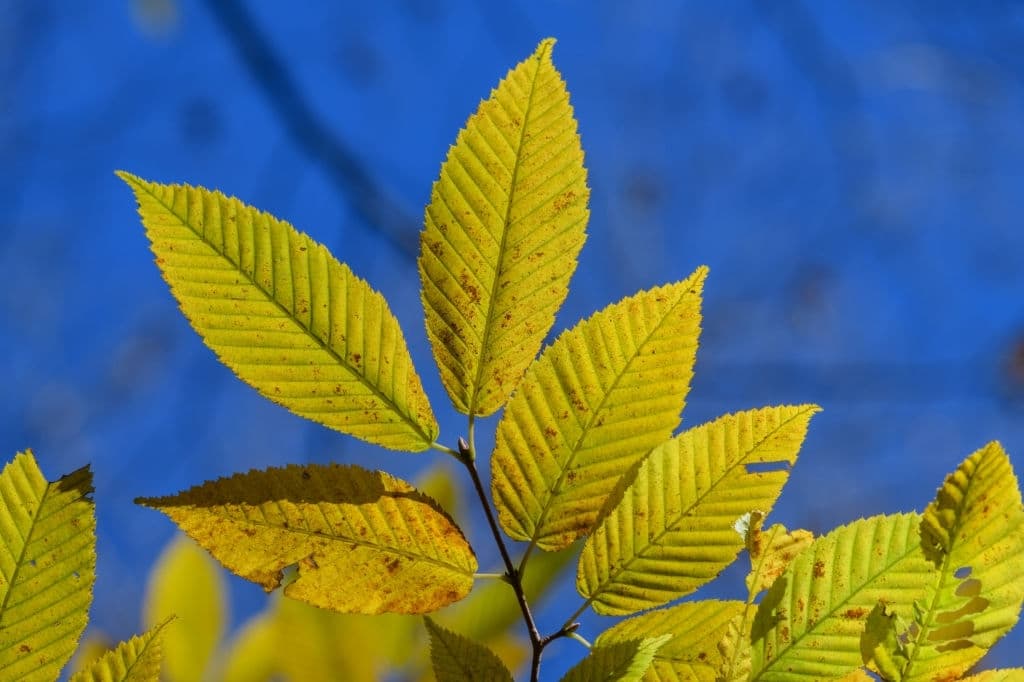
Nonetheless, its yellow green leaves turn yellow at the first weeks of fall and then transform again into brownish gold as the season deepens. It is a rare maple tree, but it still is a beautiful landscape specimen tree growing from 15-30ft.
9. Japanese Maple (Acer palmatum)
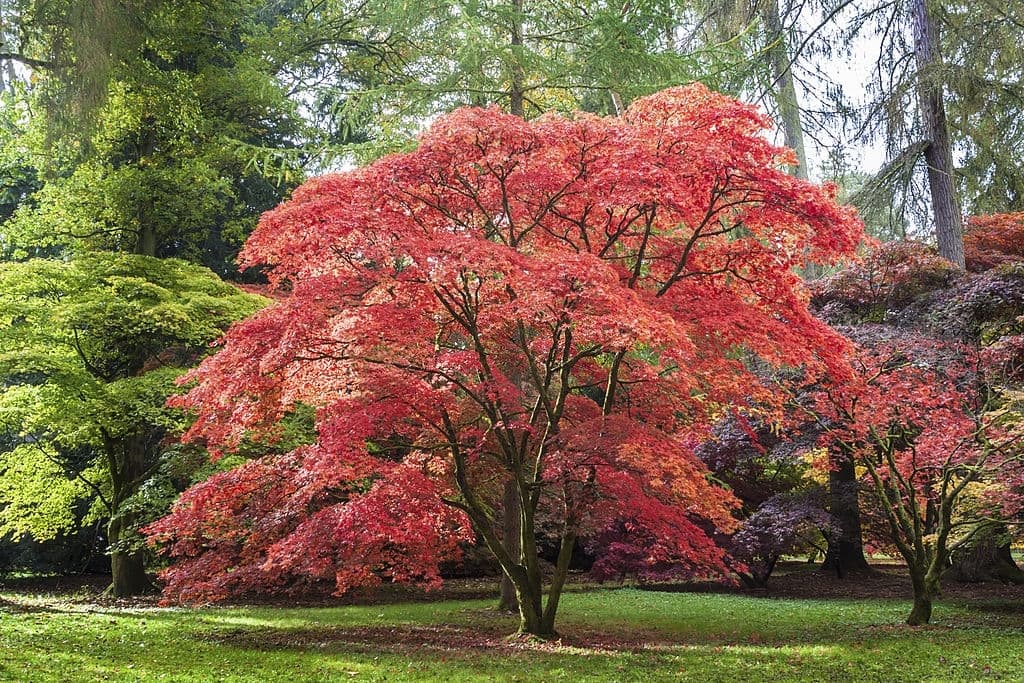
This one is a common landscape specimen tree. It has one of the maple tree types with the most cultivars. They are loved because of their versatility: they can be left to grow into trees or can be shaped in various ways as well as grown in containers.
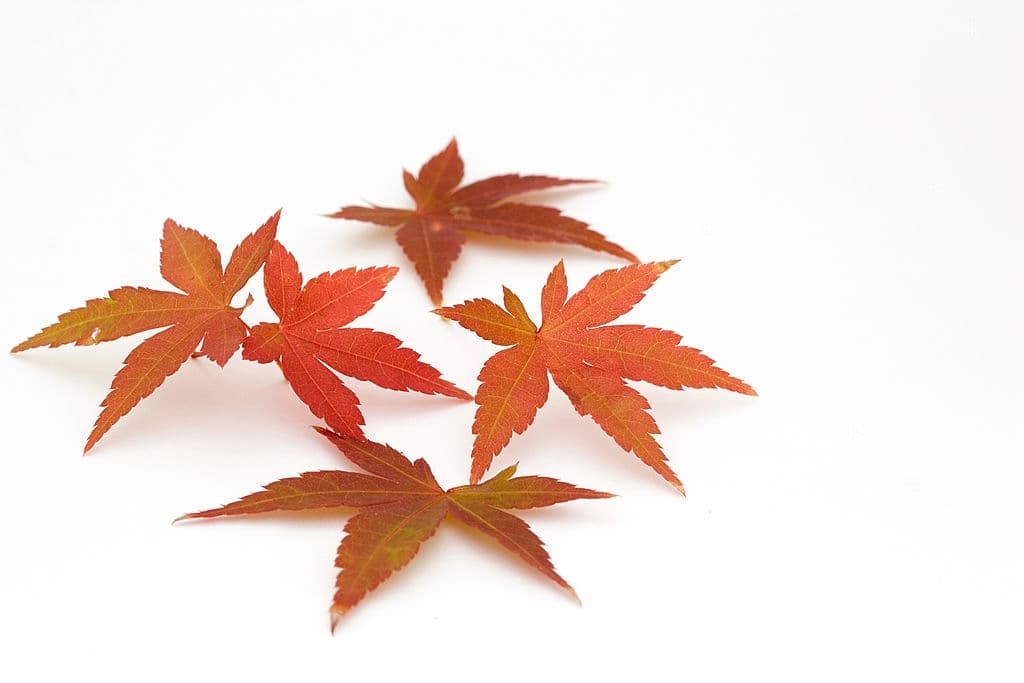
Typically, they grow at a height of 25ft. They love partial shade and well-draining soils. They grow small, yet majestic pink maple leaves in the fall, making an autumn visual display.
10. Laceleaf Japanese Maple (Acer palmatum ‘Garnet’)
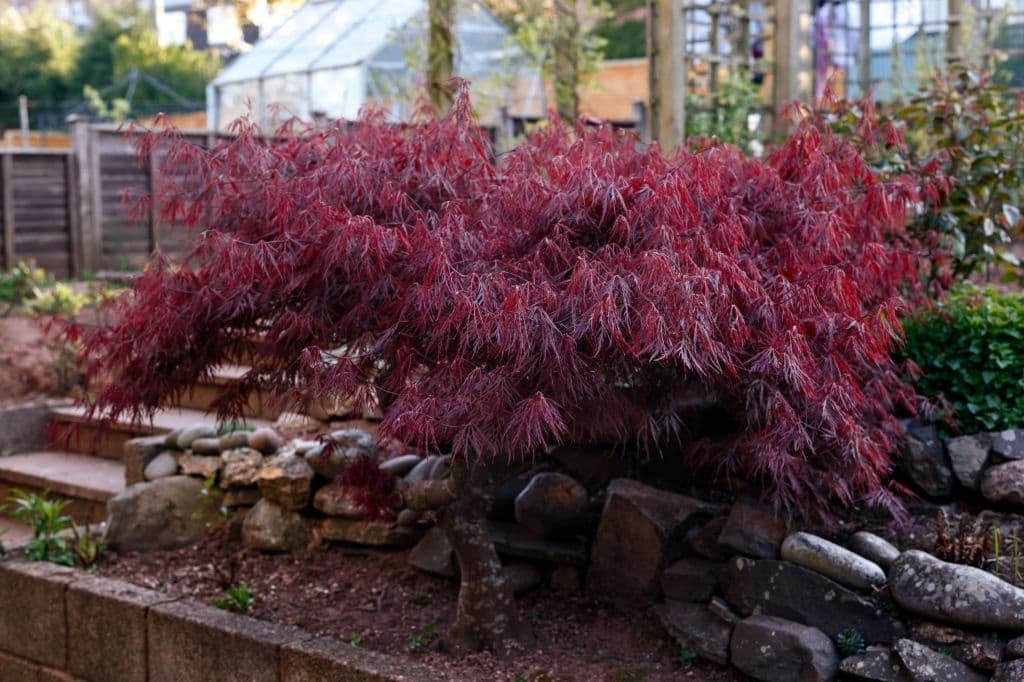
This one is a cultivar of the ornamental Japanese maple known for its notable foliage colors. It is also called the Garnet maple because of its showy, deeply dissected, seven-lobed leaves that are red-orange-purple. It holds this color combo the whole summer and then completely turns into ruby red in the fall.
It is also a beautiful focal point for any landscape because of its dramatic, pendulous growing habit. It only grows from 5-10ft. They can be grown as small trees, shrubs, or container plants. It is, however, susceptible to common maple tree pests and diseases.
11. Norway Maple (Acer platanoides)
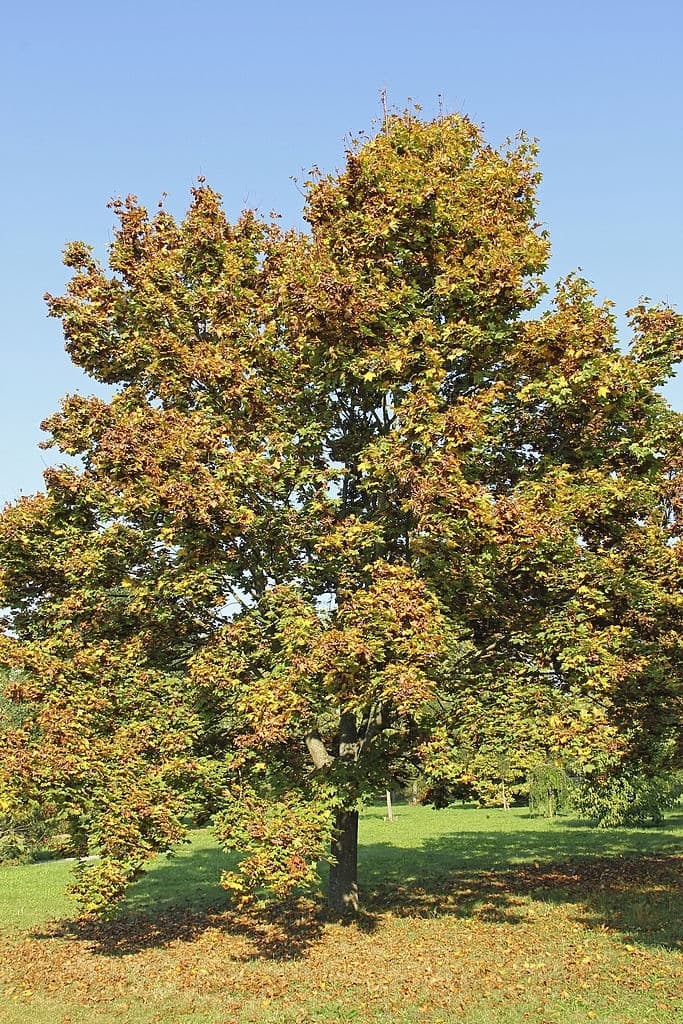
The Norway maple is a common scene in national parks, streets and in front of homes because of their enormity. It is one of the hardest maples out there, being able to withstand very high traffic areas as well as long winters and droughts. It can also thrive well in soils with high salt and acid content.
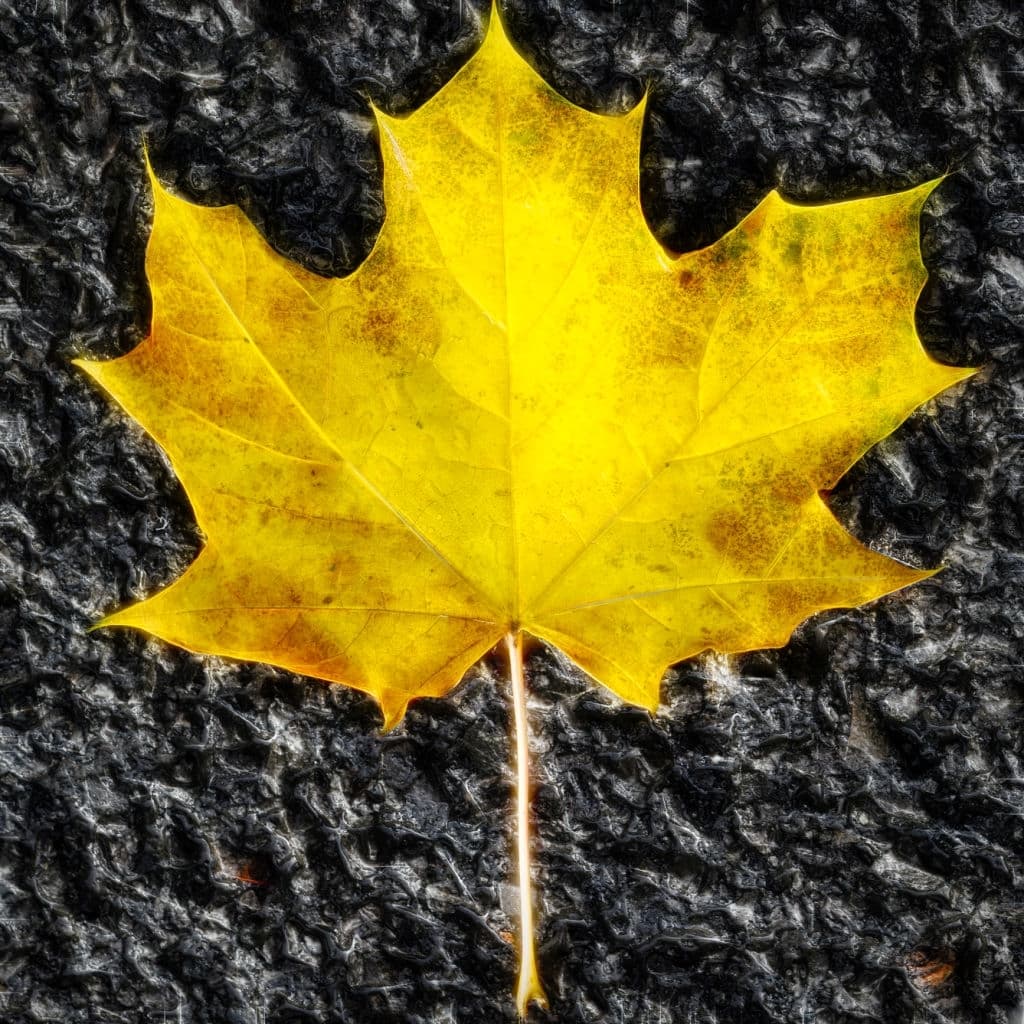
Norway maples love full sun and partial shade. They thrive extensively in zones 4-7 at a height of 50ft. If you intend to have them for your landscape, best plant them far from the home’s structure as the roots are very sturdy and invasive. You would love its red, orange and yellow colors during fall.
12. October glory maple (Acer rubrum ‘October Glory‘)
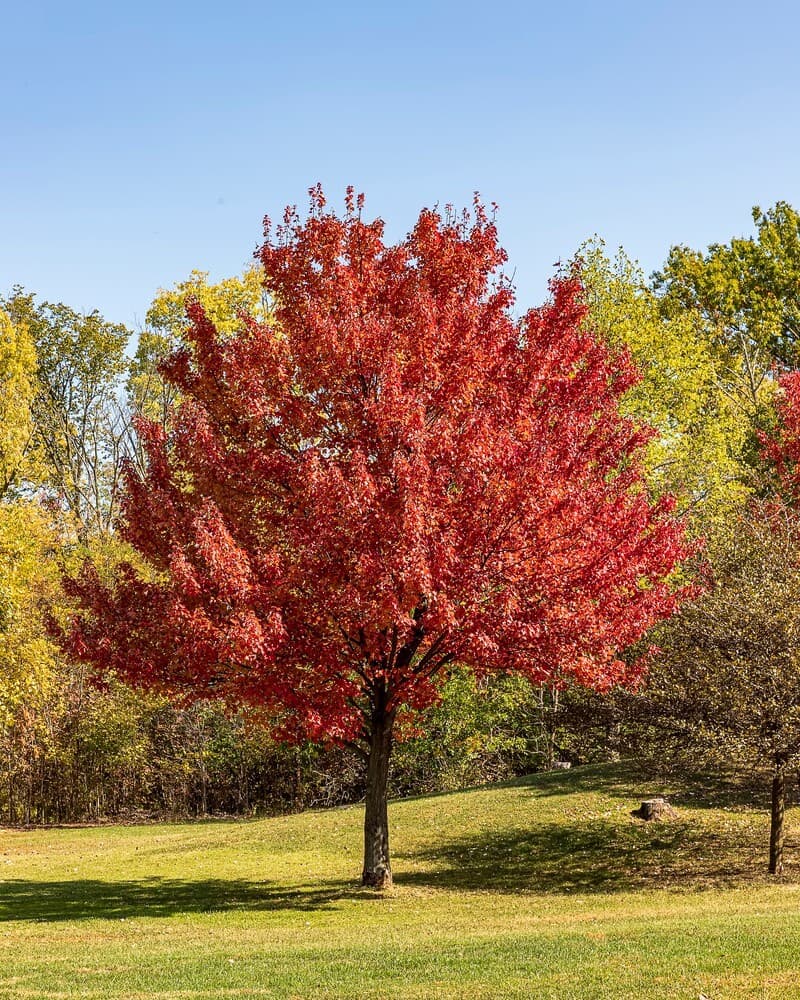
This one is an ornamental variety of maple trees. It is a cultivar of the red maple and best thrives in temperate to warmer climates. It blooms red flowers in spring and bears small fruits thereafter. The seeds of its fruits are important sources of food for wildlife.
It is a fast grower and reaches 40-50ft in height. As an ornamental maple tree, it offers a visual display of red, orange, and yellow leaves all at the same time in one tree during fall. It is slightly drought tolerant and can be susceptible to common tree pests and diseases.
13. Paperbark Maple (Acer griseum)
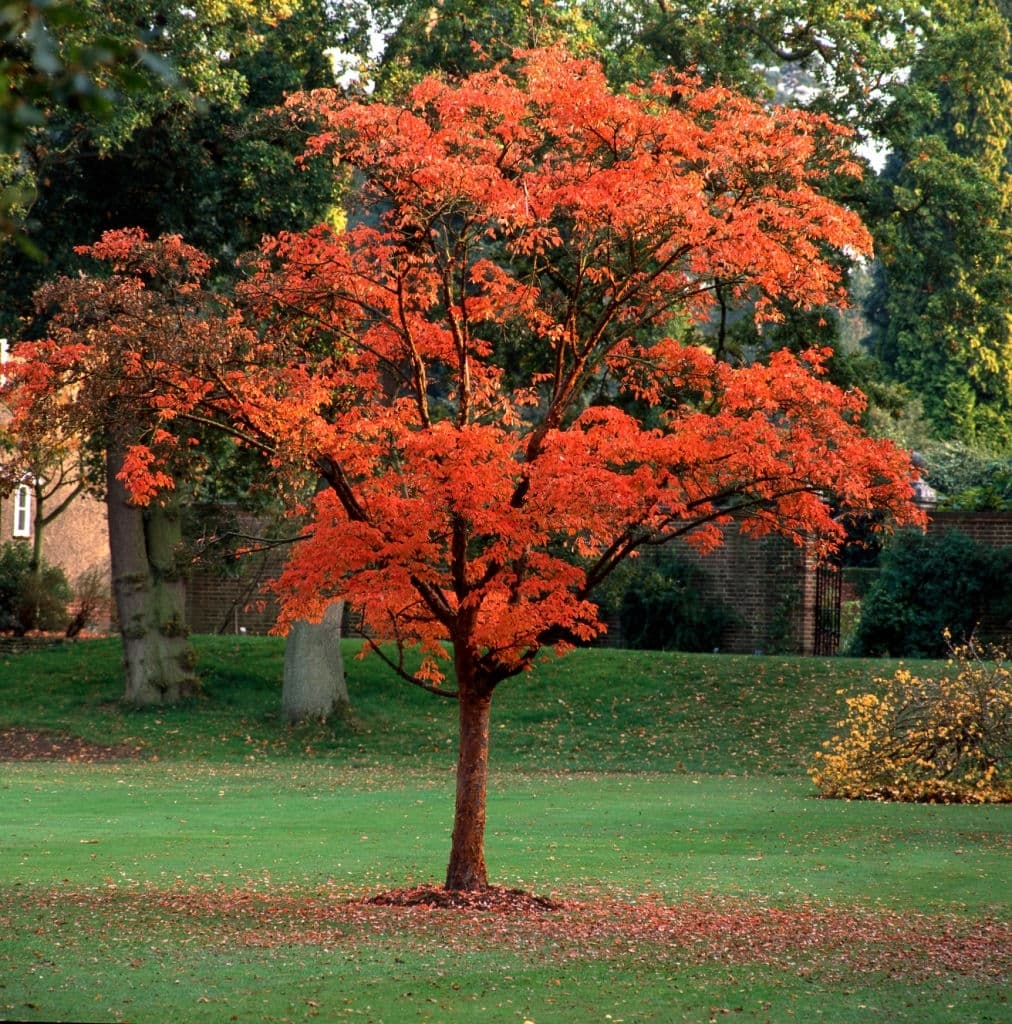
This one gets its name from its brown copper bark and branches that peel year-round. It is a beautiful specimen tree that grows up to 25ft. It typically grows a multi-stem shrub, but it can be trained to grow at a single stem. The leaves are bright green most times of the year but during fall, it turns into bright red.
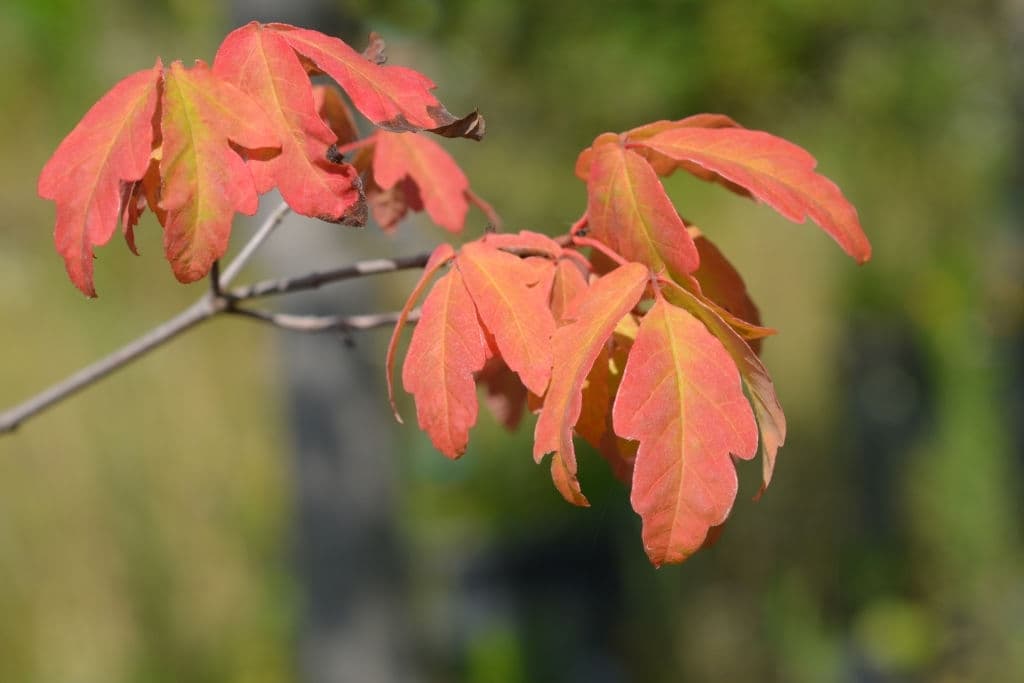
Compared to other maple trees, it is not drought tolerant, needing more frequent watering. It cannot tolerate poor quality soils too so make sure that you get the right potting mix if you wish to grow this one in containers.
14. Red Maple (Acer rubrum)
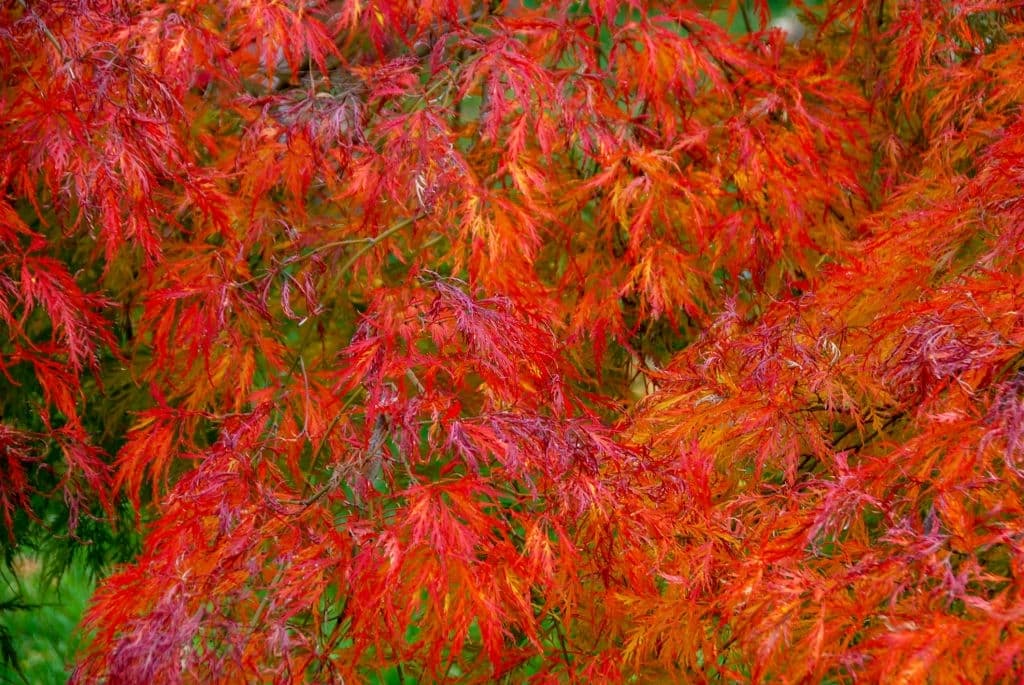
The red maple is considered as one of the most warm climate hardy maple trees out there as it thrives in zones 3-9. It is a fast grower, and it could reach a height of 75ft. It is a good landscape tree because of its commendable shade reach. However, it has invasive roots so plant it as far from the house.
The leaves of the red maple turn into bright red and orange two weeks before fall. As such, they are the signifiers that fall is coming. It is not choosy when it comes to soil conditions. Its main downside however, would be its susceptibility to a wide range of maple tree pests and diseases.
15. Shirasawa’s Maple/Fullmoon maple (Acer shirasawanum)
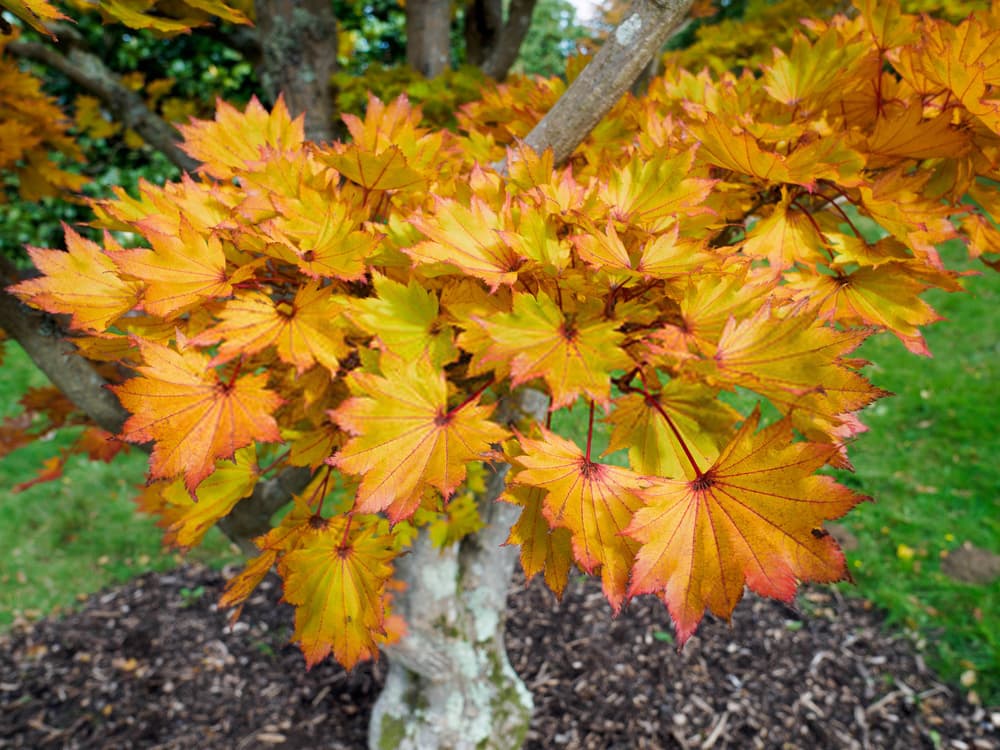
It also goes by the name full moon maple, and it is a shrub native to Japan. It is often associated with the amur maple too because of its high ornamental value. It grows in between 20-30ft and its most notable characteristic would be its 9-13-lobed leaves with serrated edges and rounded shape.
Its leaves also offer a full visual display during fall. Its yellow green leaves turn into golden orange and deepens into fiery red as the season progresses.
16. Silver Maple (Acer saccharinum)

This one shares a strong resemblance with the willow tree, making it a beautiful, dramatic, specimen tree. It loves a lot of moisture so you would find this maple tree along ponds, creeks, and riverbanks.
It has the signature five-point leaf of the maple that is silvery green most of the time but turns into fiery yellow during fall.
It grows high at 70ft and thrives in zones 3-9. However, it is not a go-to choice for landscapes because of its shallow, invasive roots and because it is very susceptible to pests and diseases.
17. Sugar Maple (Acer saccharum)
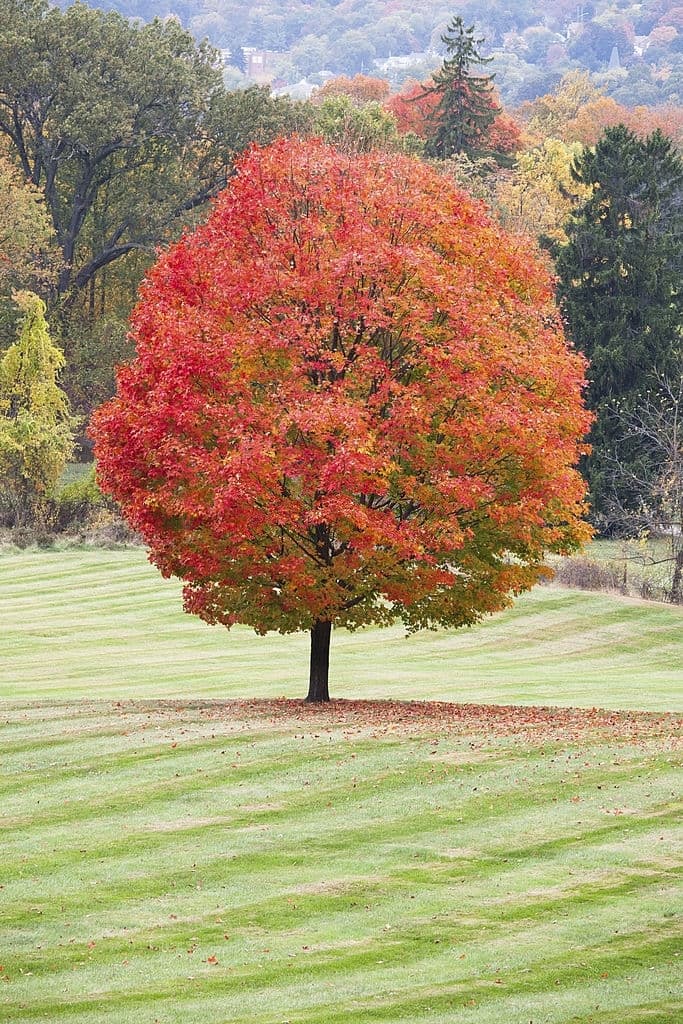
This maple tree is responsible for the production of maple syrups around the world. But beyond its contribution to the world economy, you would also not want to miss its beautiful autumn colors of red, yellow, and orange.
It is also considered as one of the tallest maple trees as it grows to a height of 120ft and 50ft wide.
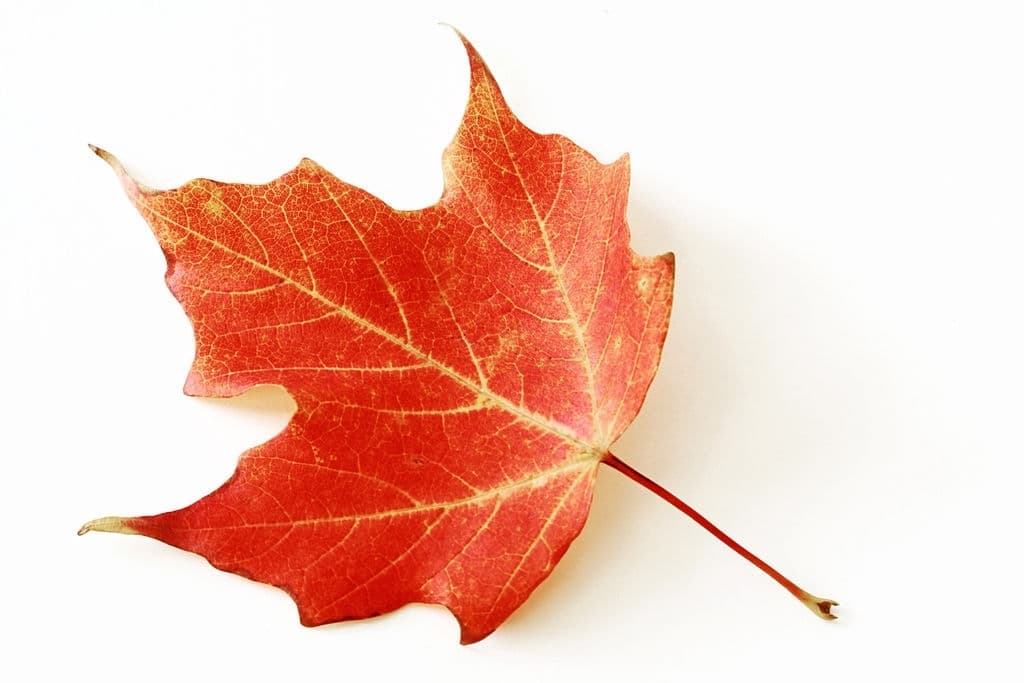
As landscape trees, they work well as shade trees or as a landscape fence or screen. It loves full sun, well-drained soils, and frequent watering during dry seasons.
18. Sycamore Maple (Acer pseudoplatanus)
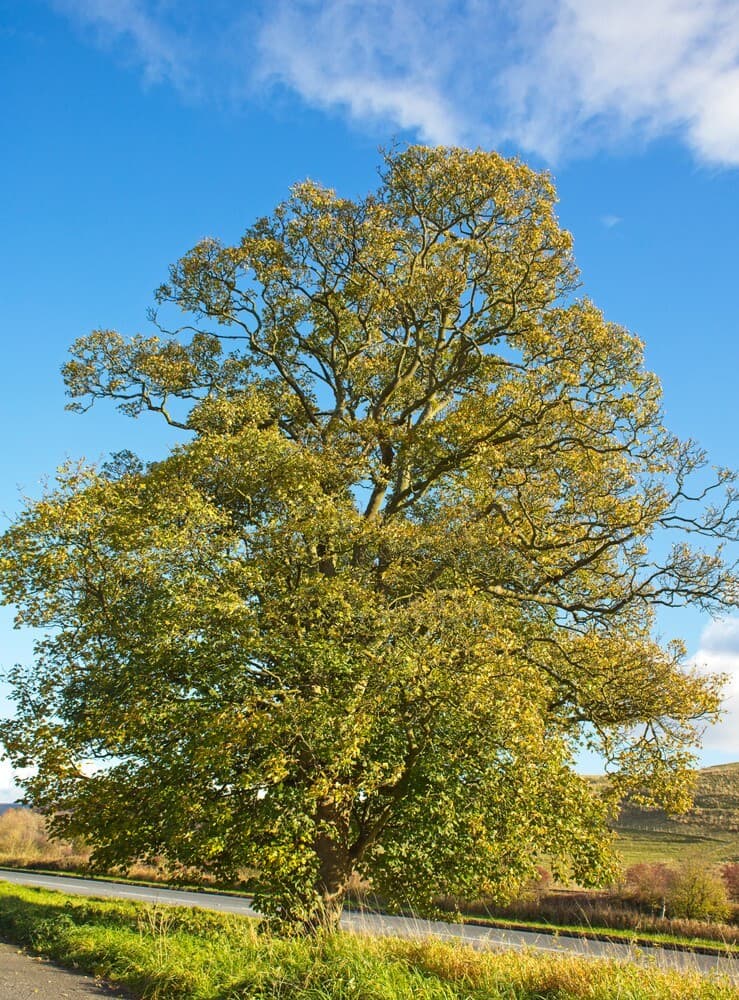
It is named as such because its leaves resemble the leaves of the sycamore tree more than the signature maple leaf. Like the hedge maple, this is also a good fit for urban landscapes as it could tolerate pollution, poor quality soils, and is also drought tolerant.
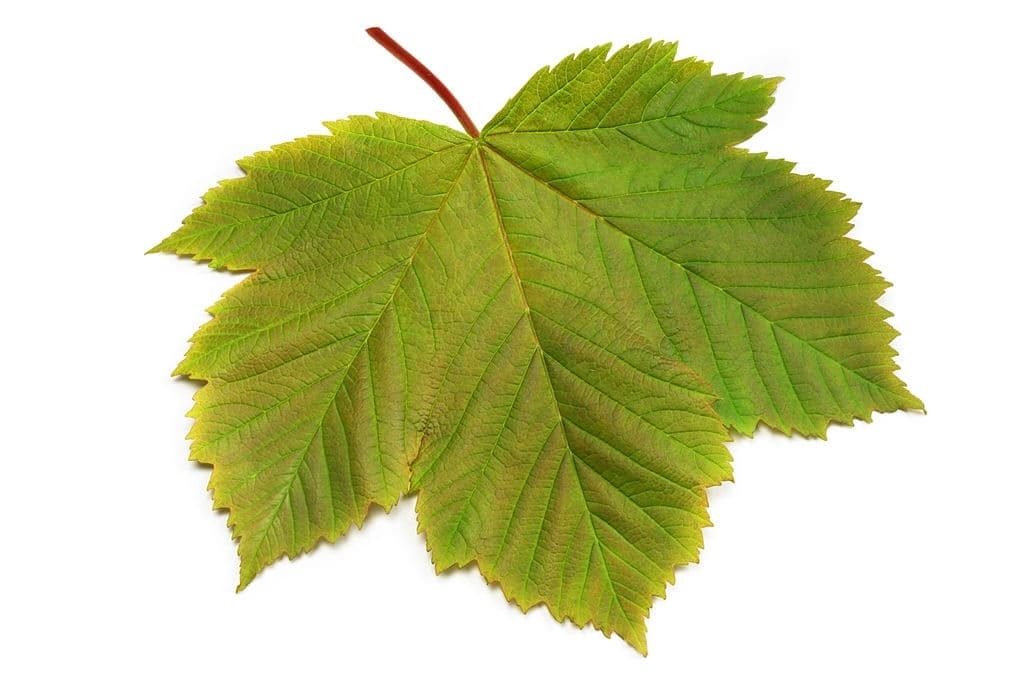
In terms of appearance, it is a massive maple tree as it grows in between 40-100ft. It has a dense, rounded crown, with subtly lobed leaves that turn into bronze during fall. It is more popular as a shade tree than a specimen tree for your landscape.
19. Tatarian Maple (Acer tataricum)
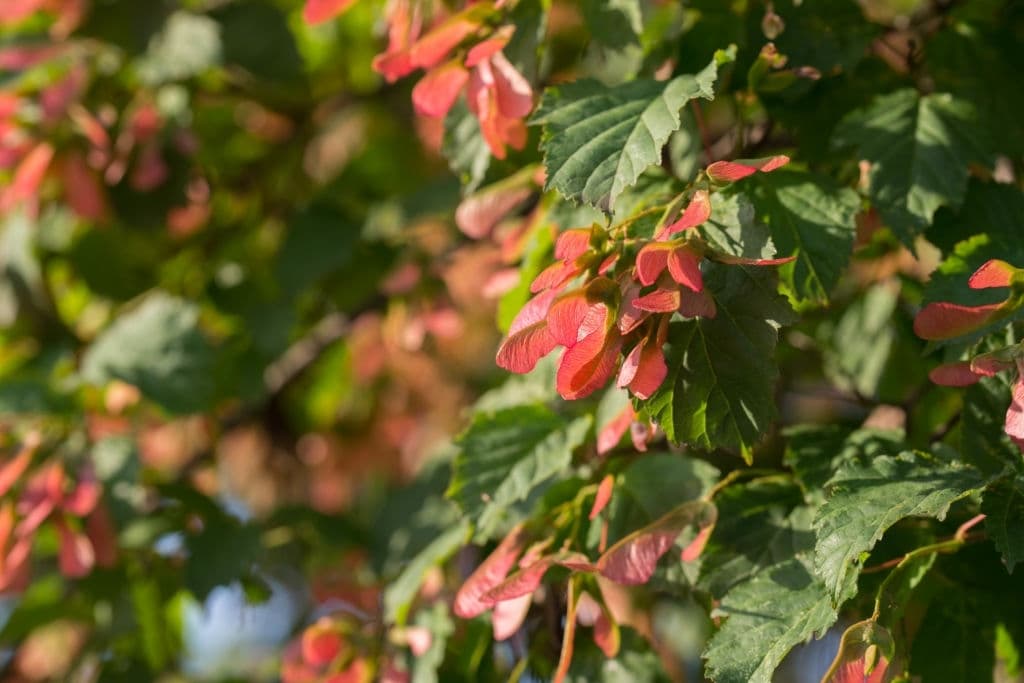
The Tatarian maple is the mother species of the Amur maple. You may opt not to prune it to become a multi-stemmed shrub or to prune it to be trained to grow as an upright tree. At youth, its leaves only have three lobes and as it comes to age, they would become totally lobeless.
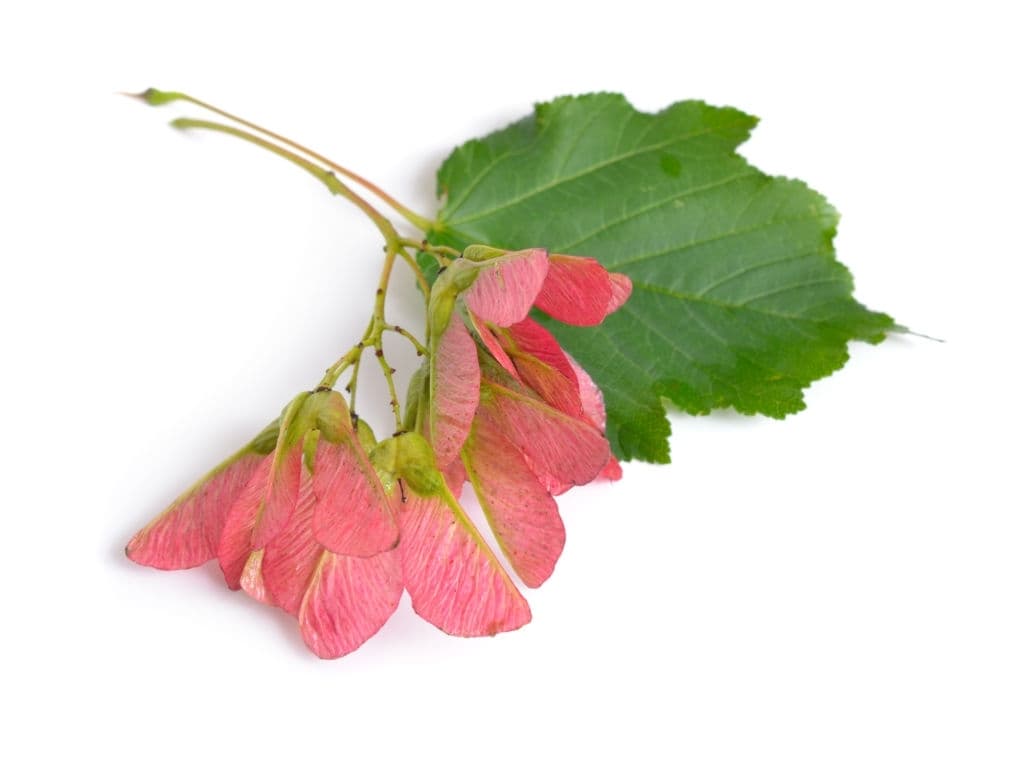
In the spring, it blooms odorless, white flowers and then followed by red fruits. The leaves turn into fiery yellow or bright red during fall. It grows to just 10-20ft and thrives in zones 3-8.
20. Three Flowered Maple (Acer triflorum)
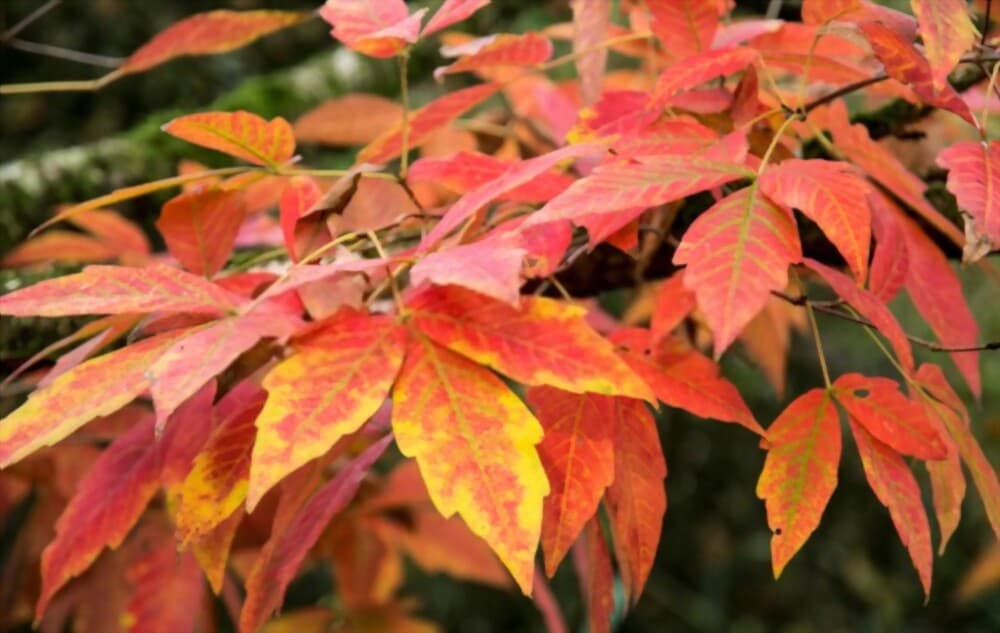
This one is another ornamental maple that is distinguishable for its ash brown, flaking bark revealing layers of vertical strips and an inner copper-brown colored wood. Its trifoliate leaves have a silver-blue-green color most of the year and turn into bright red, orange, and tinges of yellow in the fall. The leaves all shed during winter.
It is called such because its yellow-green flowers appear in clusters of three during spring. It is easy to grow and low maintenance but can be susceptible to common pests and diseases. It grows in between 20-30ft and is a favorite specimen tree for landscapes.
21. Vine Leaf Maple (Acer cissifolium)
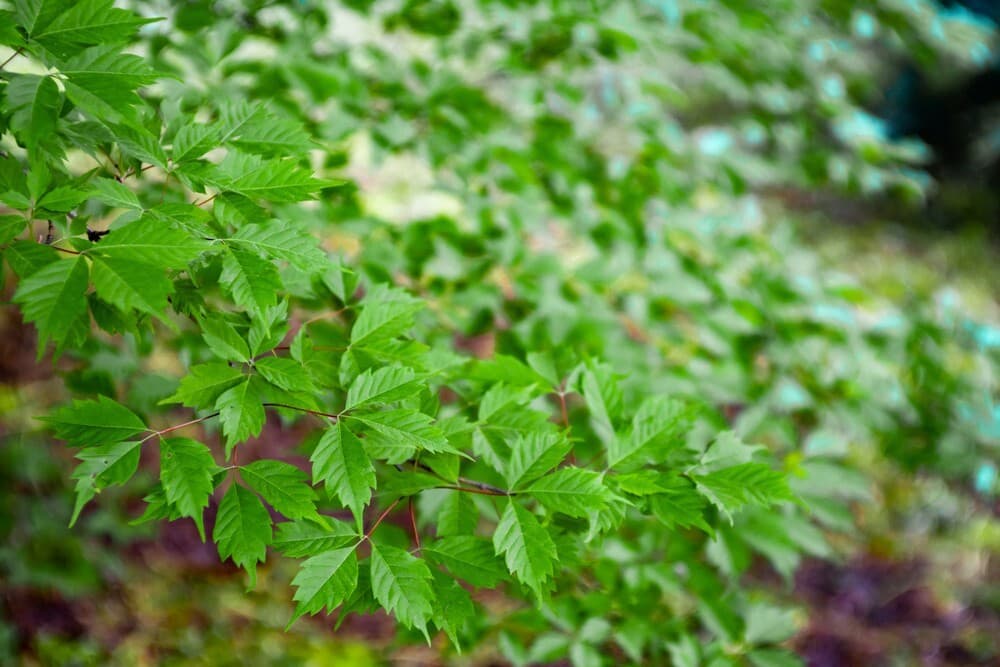
It gets its name from its trifoliate leaves which means that they have three parts. It does not have the same maple leaf look. As a matter of fact, the leaves would resonate with the leaves of ash trees or ivies. Hence, it is also called the ivy leaf maple.
As for its look, it is close in appearance with the Japanese maple and is also used extensively for ornamental purposes in the landscape. It grows in between 15-30ft and its leaves offer a visual display of yellow and red shades at fall. It is native to Japan and thrives in partial shade.
What are the most common North American maple trees?
Since 13 of species of maple trees are native to North America, it is proper to know which among these thirteen are still well endemic in the region. The five most common maple trees that remain well distributed in North America would be: sugar maple, red maple, silver maple, bigleaf maple and boxelder maple.
Why is the maple leaf important to Canada?
There is no associated folk story that links maple leaf to Canada, but it has been used as a national emblem since the 1700s. The earliest historical archival that links the maple to the Canadians would be the use of maple tree sap by Canadian aborigines for medicinal purposes. Aside from that, the whole tree was also noted as a stable food source for aboriginal tribes back in the day.
Now, the maple leaf is a strong emblem to denote Canada’s identity. For many years, the song ‘Maple Leaf Forever’ was Canada’s national anthem, and the maple leaf is used by the Canadian military as their official symbol. It is also seen in many provincial coat of arms across Canada.
Conclusion
If you are considering growing a maple tree anytime soon, there are specific factors that you must bear in mind. One would be the location. Most of them have an invasive root system so if you have a large perimeter, that would not be a problem. Also ensure that they only grow in well-draining soils and that the right pH level is there as well as proper moisture.
But with all things considered, maple trees are a visual catch for any landscape. The bright colored leaves during fall is one thing, but its sturdy, majestic build is also a view to be reckoned with.
Related: Types of Locust Trees | Types of Cherry Trees | Types of Cedar trees | Crepe Myrtle Tree | Types of Redbud Trees | Types Of Dogwood Trees

